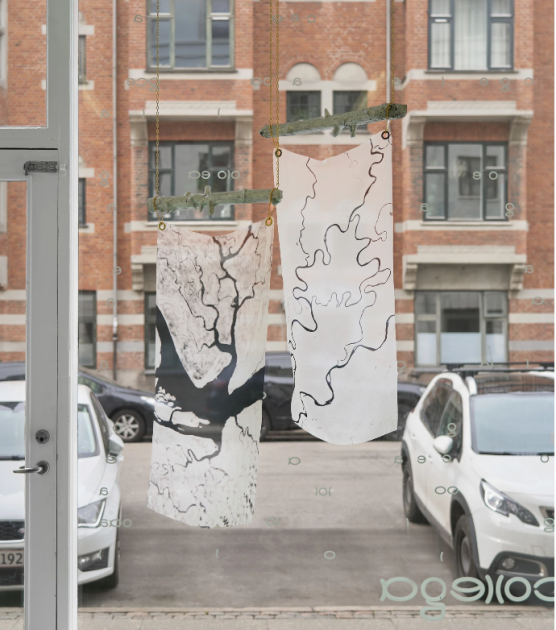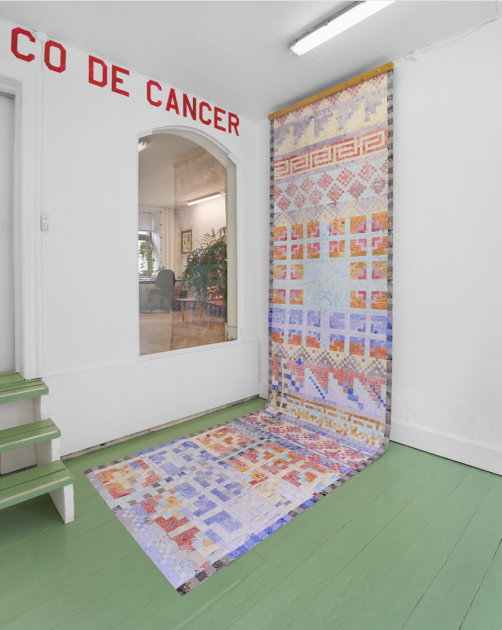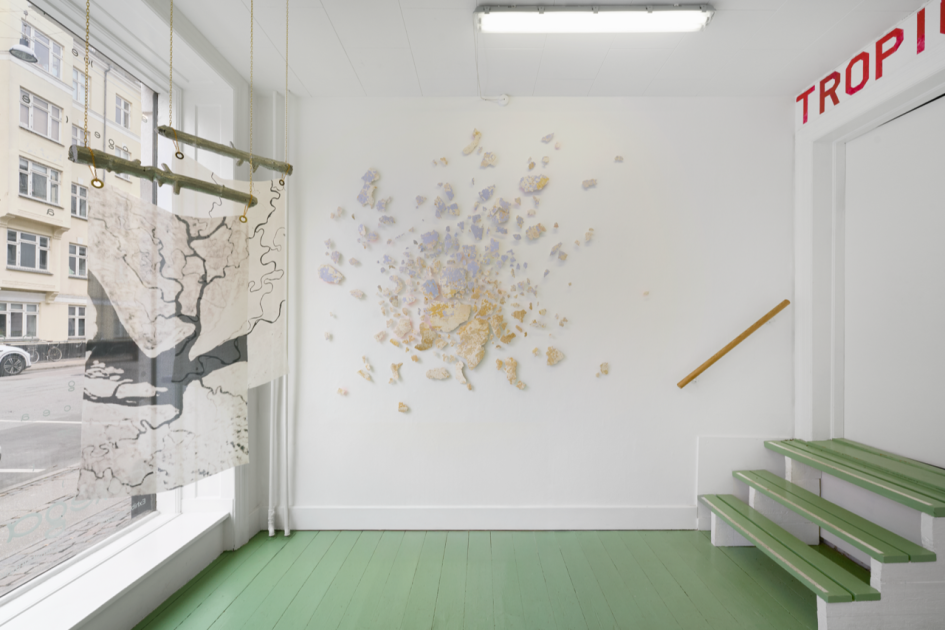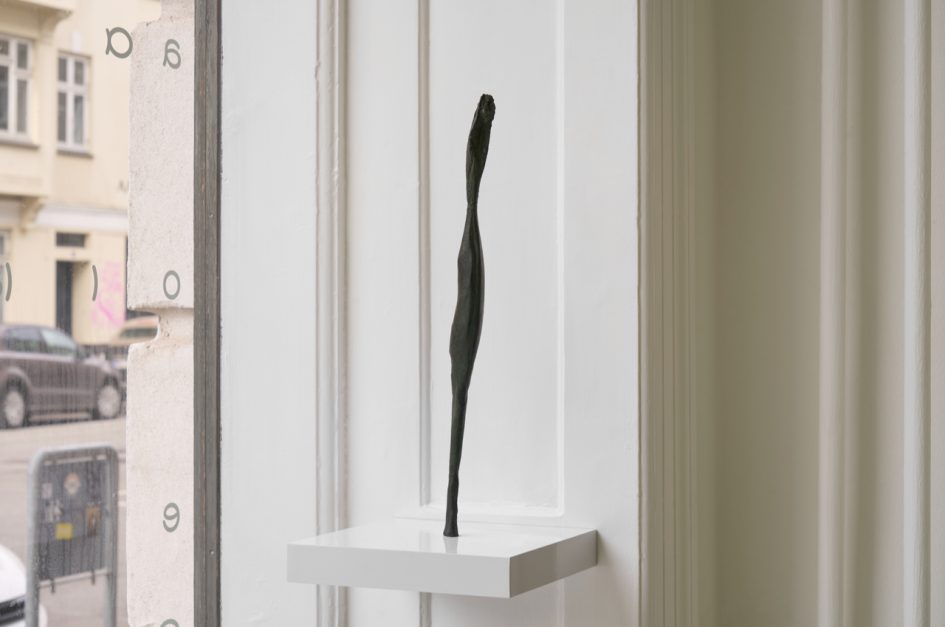Testing elsewheres: art exhibition of Uruguayan artists in Copenhagen

Artists Rita Fischer, Juan-Pedro Fabra Guemberena, Linda Lamignan, and Paola Monzillo presented the exhibition Testing Elsewheres in Denmark, from February 28 to April 17, 2025. This exhibition was the result of a collaboration between Collega Gallery (Copenhagen) and Proyecto CasaMario (Montevideo). The work of the four artists featured in this exhibition sketch poetic topographies and critical cartographies, hinting at dissident ways of relating to the spaces we inhabit. The exhibition was curated by Manuel Gallardo (member of Proyecto CasaMario) and Jari Malta (Collega’s artistic director).
For almost ten years CasaMario operated from a physical space in the old town of the Uruguayan capital, where they programmed exhibitions, seminars and other public events which would often spread through the city. Moreover, the porous structure of the organization allowed them to become a resource for different grassroots initiatives, hosting communal meals and neighborhood assemblies.
In 2021 CasaMario presented a detailed plan to the municipality, proposing the activation of an abandoned 1200 square meters hangar. The new cultural center was conceived as an institutional experiment of sorts, run collectively by several local groups following a horizontal and participatory logic. When that plan finally fell through, CasaMario decided to scale down. Instead they presented "Sala de pruebas" [Testing room], a series of residencies and performative actions taking place in a 1:10 scale model based on the post-industrial building. Ultimately, "Sala de pruebas" employed artistic languages to enhance a coral reflection on urban development and the right to the city.
Visual artist and architect Paola Monzillo was one of the participants of "Sala de pruebas". Throughout her practice, she meticulously dissects the discourses and tools that describe and represent our surroundings. Monzillo distorts foundational narratives of her native Uruguay, re-signifies maps, creates gaps in colonial engravings, challenges street nomenclatures... as if an alternative land beyond eurocentrism could steam from within those devices, once they have been sabotaged. For this occasion, the artist shows "Tapiz, huellas en el territorio II" [Tapestry, territory traces II], from 2019. The work is part of a series where Monzillo cuts and patches together maps from different Latin American cities. The resulting tapestry blends the urban planning inherited from the Spanish Empire with patterns inspired by textile traditions prior to the occupation of the continent. The traces alluded to in the work title are not remnants from the past but testaments of the anti-colonial imageries haunting this territory.
Linda Lamignan transports us to the Niger Delta with two works from their Tẹkpẹrẹẹ́́ series, where the Copenhagen-based artist alters satellite images of the Delta State rivers in order to honor its sinuous movement, as well as the life and the memories carried by its waters. The series is also pointing at a history of colonial and capitalist extractivism: for decades, the Niger Delta has been suffering the environmental impact of the oil industries established in the area. Departing from an animist sensibility and a deep connection to the materials they work with, Lamignan (re)maps the region in order to channel that stolen energy. The pieces holding up the textiles are made of aluminium, in reference to the mining industry. By signaling the transactional displacement of geological matter (which entangles West Africa and Scandinavia) the artist meditates upon their own diasporic heritage.
Juan-Pedro Fabra Guemberena presents a site-specific work that owes its title to an imaginary line dividing the planet in two. A line which draws a division between valuable and disposable lives. "Trópico de Cáncer" (2025) refers to the Article 5 defined by NATO in its founding treaty. The so-called principle of collective defense establishes how, if one of the signees were to suffer an attack, the rest of the alliance is automatically bound to protect the affected member. However, Article 5 contains a remarkable nuance: the principle only applies to those nations situated north of the Tropic of Cancer. Guemberena accompanies this work with a piece from his Interludes (2021) series, where he uses “7.62 NATO” (the standard cartridge among the countries from the military alliance) to shoot real ballistic soap blocks. The resulting bronze sculpture thus mirrors the actual cavity produced by a bullet when penetrating a body. Together, these two works function as a commentary on North/South asymmetries and the way in which the weapon industry and colonialism intertwine.
For the past decades Rita Fischer has been exploring the limits of painting as a medium, often incorporating it into spatial works. Her practice tenses the distinction between figuration and abstraction: the artist produces colorful no-places that, while presenting recognizable elements (a tree branch, a shore), evoke a sense of disorientation. This exhibition re-enacts one of her Novus, an installation project that she started in 2017. In its first iteration, Fischer used the wall paint of an unrestored prison cell in Montevideo (from a building that currently hosts the EAC, a contemporary art center). She then pinned the small fragments up forming what she calls maps/landscapes, in which time appears to have been suspended. The Novus presented at Collega has been taken from the walls of the old CasaMario house. Despite the concrete material origin of the composition, Fischer creates fragile archipielagos without any distinctive reference. Landscapes in decay or, perhaps, worlds in the making.



